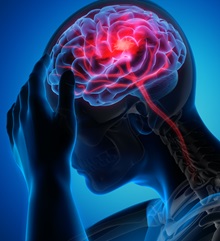 As per data from the Stroke Services Tracker (SST)—a monitoring tool developed to evaluate progress towards Stroke Action Plan for Europe (SAP-E) targets—improvements are being made with regard to stroke care planning and treatment access, but persistent disparities requiring “urgent attention” remain at play.
As per data from the Stroke Services Tracker (SST)—a monitoring tool developed to evaluate progress towards Stroke Action Plan for Europe (SAP-E) targets—improvements are being made with regard to stroke care planning and treatment access, but persistent disparities requiring “urgent attention” remain at play.
Data launched today, on European Stroke Awareness Day 2025, indicate “encouraging progress” coupled with “serious inequalities” across the continent, according to a joint press release from the European Stroke Organisation (ESO) and the Stroke Alliance for Europe (SAFE).
A total of 47 countries contributed to the latest dataset, providing the “most comprehensive picture” to date of stroke care across Europe. The findings—based on data from 2023—show improvements in national planning, emergency treatment and prevention; “however, too many people who have had a stroke still face major challenges in accessing the care, rehabilitation and follow-up they need”, the release adds.
“It is unacceptable that, in 2023, we still see such wide disparities in access to stroke unit care, early rehabilitation and life-after-stroke support,” said SAFE director general Arlene Wilkie. “Stroke survivors need holistic and continuous care. We call on all national governments and policymakers to do better in providing the essential services required for all those affected by stroke.”
The latest data indicate that there is growing political commitment to tackling stroke, demonstrated by the fact that the number of countries with a national stroke plan rose from 16 in 2022 to 24 in 2023, with 16 more countries currently developing one as well.
In addition, 30 European countries now involve stroke support organisations in shaping national stroke strategies and guidelines, ensuring people with lived experience have “a voice in how care is delivered”, with Lithuania, Poland and Slovakia having recently joined these efforts.
Programmes aimed at preventing stroke are also becoming more common, the release continues, detailing that Lithuania, Sweden, The Netherlands and Germany are among the countries that have launched or expanded national prevention efforts in the past year, bringing the total to 23.
The SST data also indicate that access to key emergency treatments for ischaemic stroke is improving—albeit “unevenly”. On average, 15.4% of eligible patients received intravenous thrombolytic drugs, and 5.9% underwent mechanical thrombectomy. Seven countries have now met the European benchmark of giving thrombolysis to at least 20% of patients and 14 have reached the target of delivering thrombectomy to more than 7.5% of patients based on high-quality data, while five more countries have hit this goal as per data of lower quality.
The release states that, despite this, delays in treatment remain a “major problem”. Only seven countries managed to achieve the recommended ‘door-to-groin’ time—from arrival at the hospital to starting thrombectomy—of 60 minutes or less. In 12 countries, this delay exceeded 90 minutes, potentially reducing patients’ chances of a good recovery.
In spite of some progress, the organisation of stroke services and monitoring of quality still “fall short in many areas”, according to the SST data. The goal of admitting at least 90% of stroke patients to a specialist stroke unit is only met in nine countries with reliable data while, in contrast, some countries admit fewer than one in four patients to stroke units—and others do not collect these data at all.
In addition, just 22 countries monitor the quality of stroke unit care, and the outlook is “even more concerning” when it comes to rehabilitation after hospital discharge, as only 11 countries have systems in place to monitor the quality of rehabilitation services. Early rehabilitation is available within stroke units in 22 countries, although data quality is low in eight of these, and there has been “little progress” in ensuring patients have a rehabilitation and care transition plan to support their continued recovery. Only five countries systematically monitor whether such plans are given, while 14 estimate that they are provided “without proper tracking”.
Follow-up care after stroke also varies “widely” within the latest data; just 11 countries report that at least 90% of patients receive follow-up and only four offer structured follow-up that meets recognised standards.
The joint ESO-SAFE release avers that—while “preventing another stroke is crucial”, as nearly one in four strokes happen in someone who has already had one—there are minimal data on how countries are performing in terms of providing secondary prevention, or how many patients are getting the medication and support they need. The SST data indicate that these inequalities in care are reflected in outcomes too. In some regions, death rates within 30 days of stroke remain “worryingly high”, highlighting major differences in access to emergency treatment, rehabilitation services and longer-term support.
More long-term support protocols appear limited too, as only 13 countries report having a dedicated national programme for life after stroke. And, while many of these address important aspects of recovery, support “remains inconsistent”. Twelve countries include ongoing health management in their programmes, while 10 focus on emotional adjustment and mental wellbeing. Eleven countries offer support for everyday activities and practical challenges, and an equal number provide information and guidance for both stroke survivors and their carers.
“The 2023 Stroke Service Tracker data show that, while momentum is building in some areas—particularly in national planning and access to acute therapies—major gaps in organisation, delivery and equity of stroke care persist,” said SAP-E chair Hanne Christensen (University of Copenhagen, Copenhagen, Denmark). “There is no room for complacency. Countries must take these insights and act decisively to bring data collection and stroke care up to the standards that every person affected by stroke deserves.”
“The Stroke Action Plan for Europe provides countries with the framework they need to close the gap between aspiration and delivery,” added ESO president Simona Sacco (University of L’Aquila, L’Aquila, Italy). “These data are both a roadmap and a challenge—to work smarter, faster and more equitably.”










